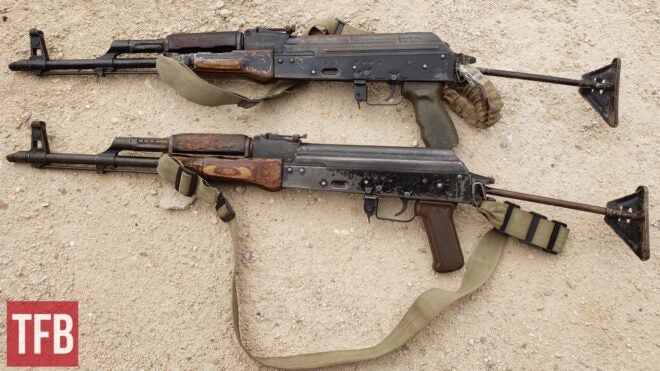In part 1 of this article, I talked about the history of Egyptian AKs, often called “Maadi” or “Misr”. In the second part of the article, I want to talk about the issues I experienced with Maadi AKs and the current developments related to Egyptian AK production.
Quality problems of Maadi rifles are a sensitive topic for US-based collectors. The rifles (especially pre-ban, imported before 1989) were never cheap. So some collectors perceive any conversation about problems of certain guns as something that can undermine the value of their collectible firearm.
So, before I begin, I have to say that I’ve never seen imported Maadi AKs in the US. I am sure they’re perfect, truly fabulous, the best thing since sliced bread, and definitely worth $3000-4000 collectors are selling them for these days. My experience with Egyptian AKs is limited solely to full-auto rifles that ended up in Iraq and Afghanistan.
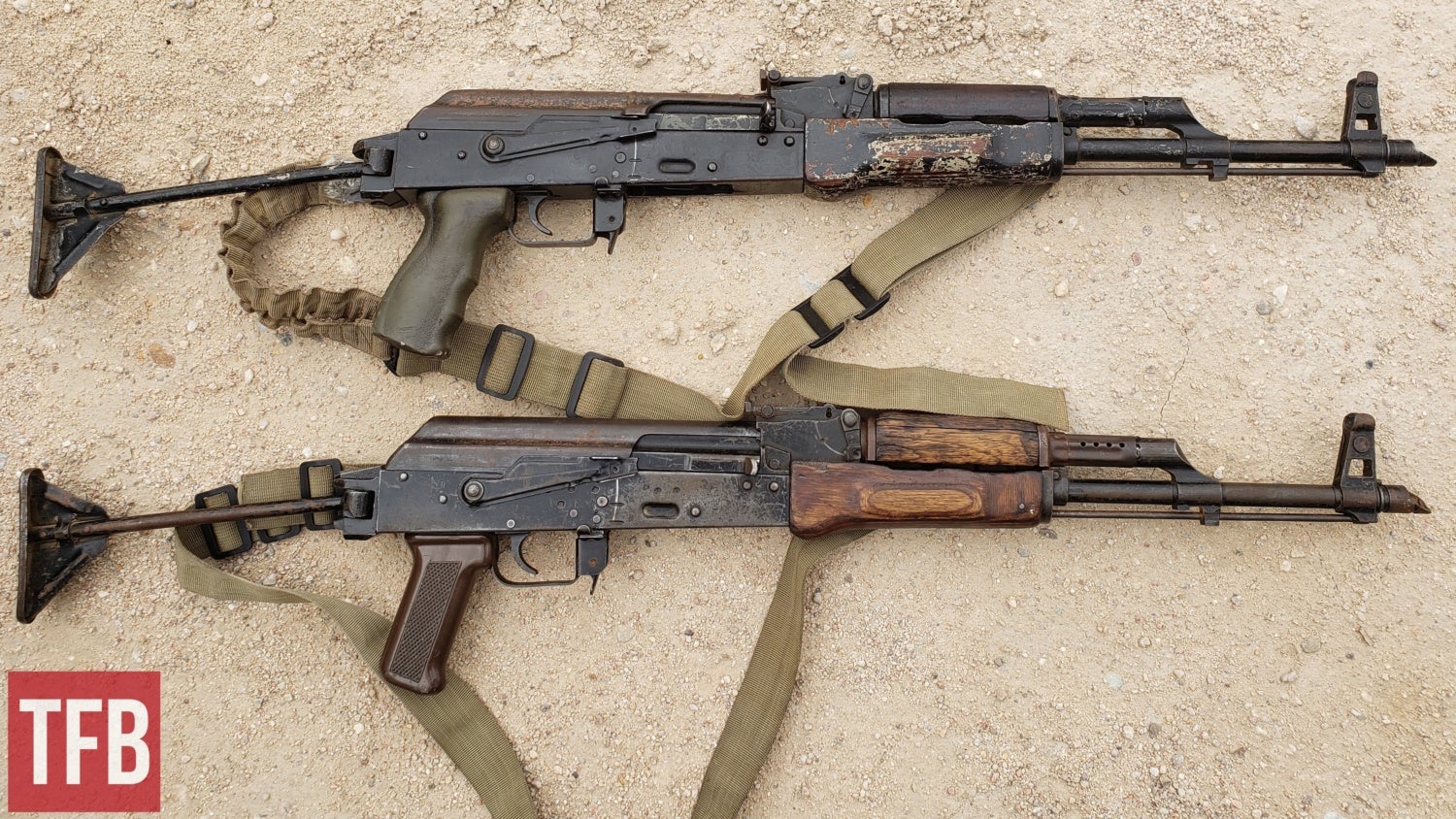
Two Maadi rifles after photographed in the south of Iraq
Before I share my experiences, I would like to share a part of the CIA report written around 1985. You can read the full report here
The Al Ma’adi Company for Engineering Industries (Military Factory 54) produces small arms, machineguns, and edged weapons for the military and sporting arms[…] The factory is underutilized and overmanned. Even factory officials admit they’re capable of producing four times their current annual level of 50.000 AKM (“Misr”). […]
the factory produces acceptable quality weapons despite operating Soviet-designed machines built to Polish specifications that process materials manufactured under Czechoslovak, French, Polish, and Soviet standards. […]
The factory will continue to encounter resistance to its products from foreign customers unless its estimated 6,000 workers take more pride in their work and produce better-quality weapons.
Paint issues
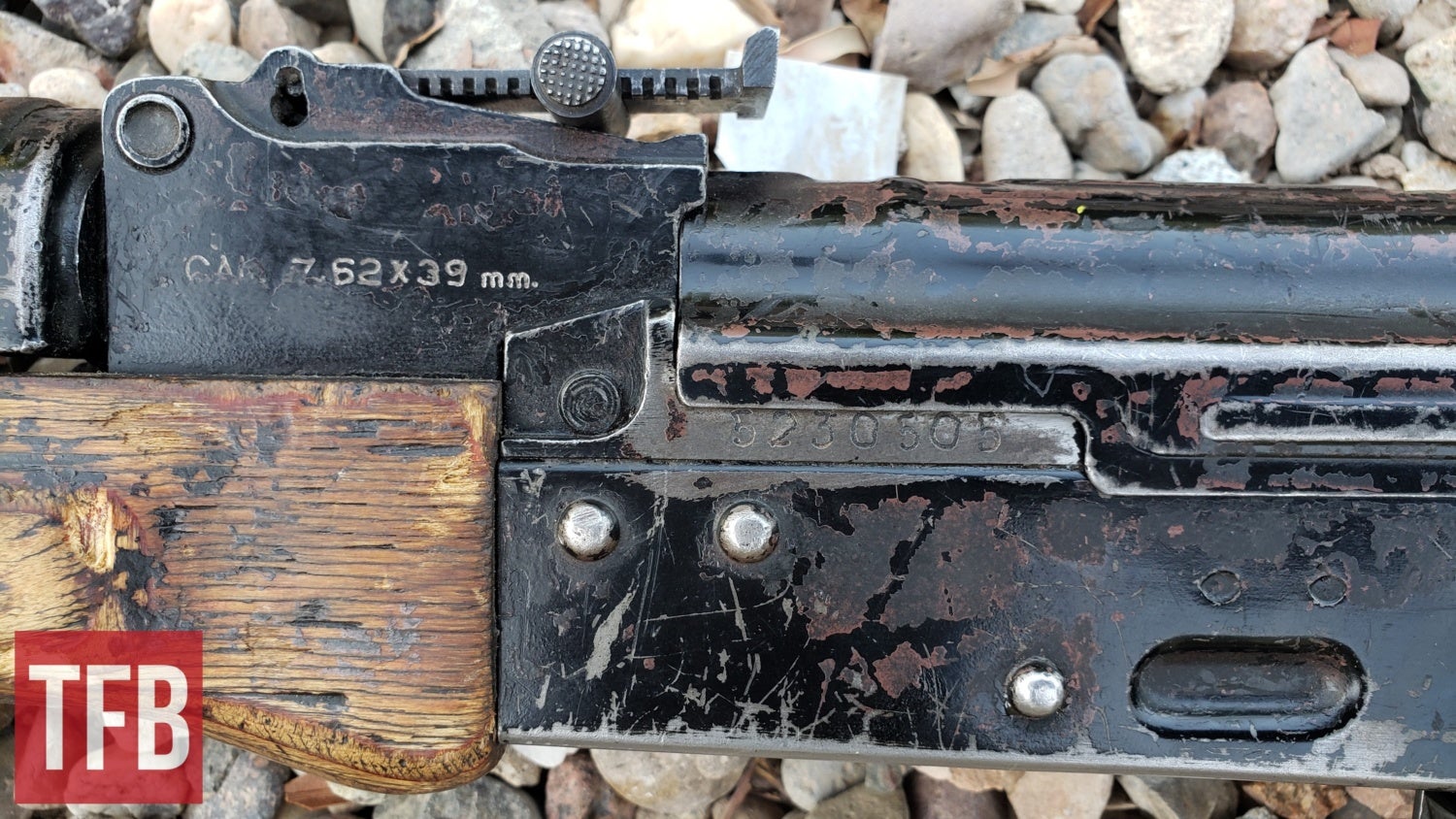
Typical condition of the paint in a well-used Maadi AK
Usually, I could tell a Maadi in a pile of AKs because of those issues. The paint on them is often flaking and chipping, giving them a look that can only be described as “I was dragged through hell”.
Frankly, I don’t know why exactly it happens. I am very familiar with the original coating process used at the Russian AK factory and there are a million things that can go wrong during the process.
If you haven’t personally seen a well-used Egyptian AK, check out this video, this is a classic condition of Maadi paint after some extensive use.
Build quality
I asked my friend, who worked as a senior armorer for a certain Egyptian government agency and he confirmed that over the years, there were some problems with Egyptian AKs, primarily with the heat treatment of the receiver. Receivers would crack, primarily near the rear trunnion. Interestingly enough, this problem only happened to Romanian and Egyptian AKs.
In my personal experience, Egyptian AKs were ok. Except for one I found in the south of Iraq, which had pretty unique rivets in the front trunnion.
Two rivets located on opposite sides of the receiver were not properly pressed in. You could fiddle with them, just sliding rivets in and out of the receiver. Perhaps it was a prototype of a rifle with quick detach rivets, but I wouldn’t know.
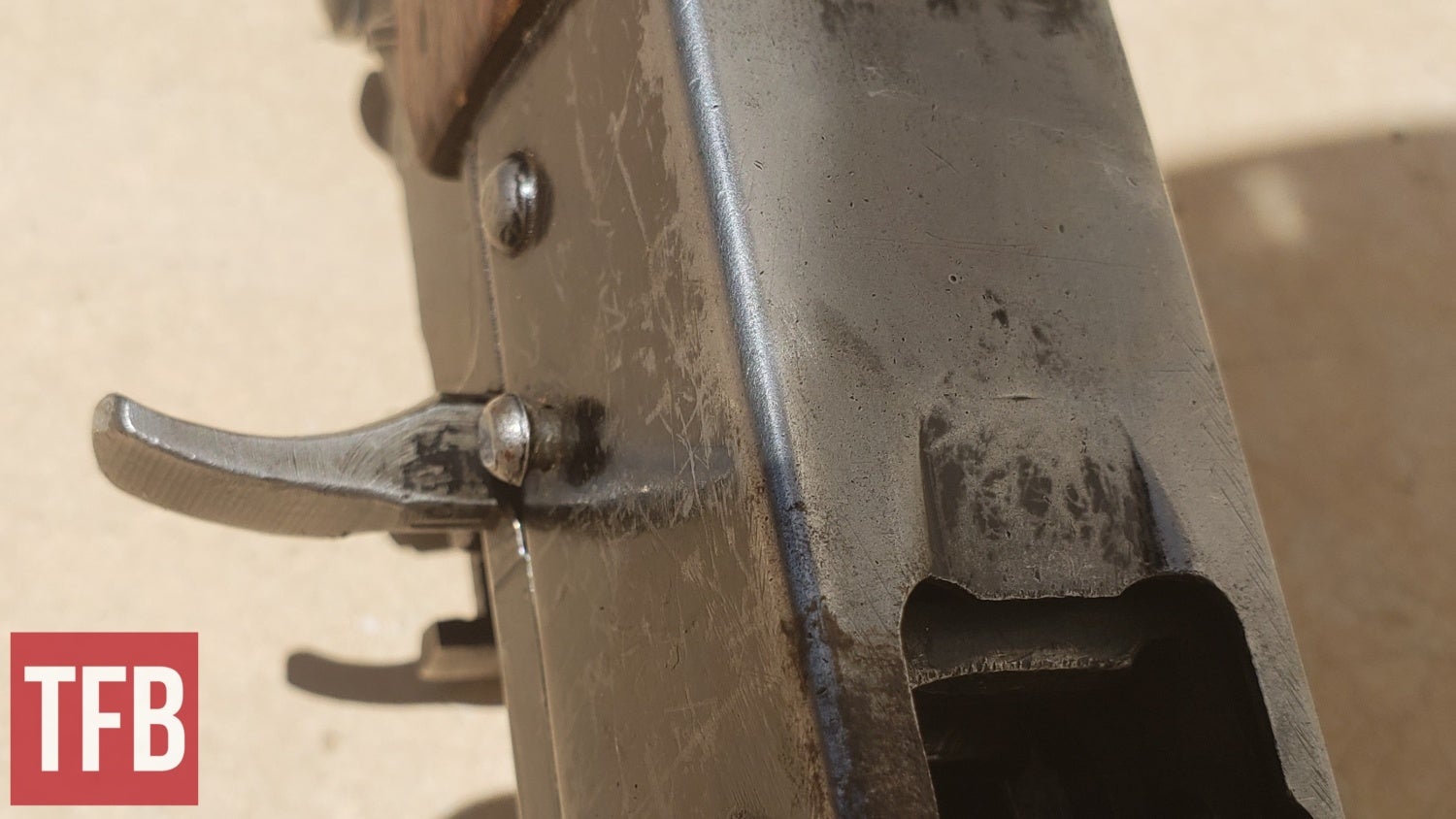
Rivets on the Maadi rifles I found in the South of Iraq (right side)
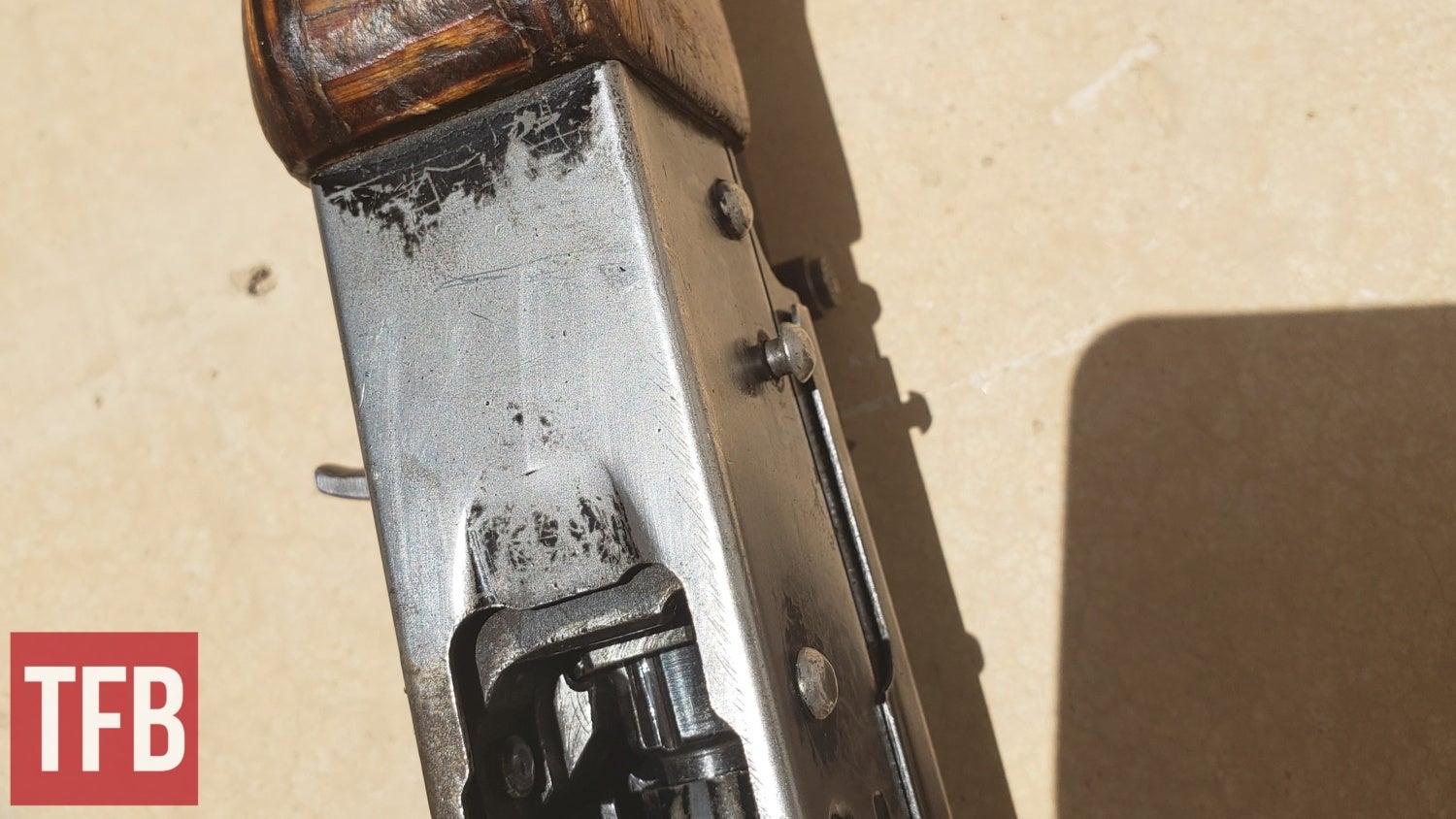
Rivets on the Maadi rifles I found in the South of Iraq (left side)
Quality issues happen with any manufacturer, and can’t say that Maadi rifles are significantly better or worse than most AK manufactured in Eastern European countries.
Around 2016, the Egyptian government decided to completely change the structure of its arms industry and created one mega-factory called 300 (The Abu Zaabal Specialized Industries Company). It was located in a remote area, so allegedly most high-skilled laborers had no desire to relocate and decided to retire instead. As far as I know, this factory does not produce AKs at the moment.
Modernization programs
In the last 10 years, the Egyptian military industry also conducted some R&D dedicated to the modernization of AK rifles. One modernization kit was developed by engineers at the Egyptian Military Factory. The first prototype has an aluminum quad rail and M4-style collapsible stock.
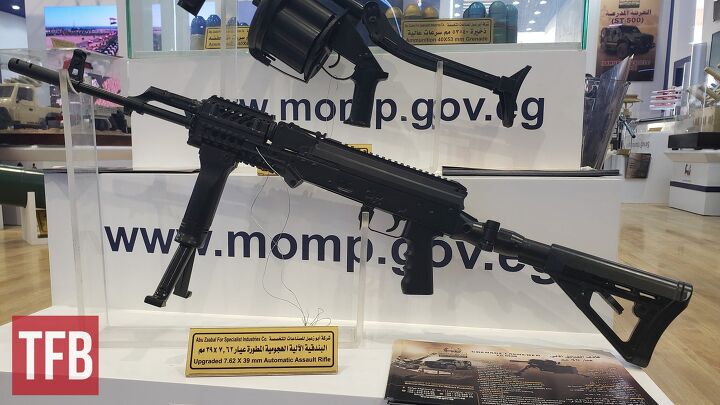
Upgraded Maadi AK rifle
The second prototype has a polymer handguard and a different rail system. Overall, this approach to modernization appears to be similar to the Polish AK called “Beryl”.
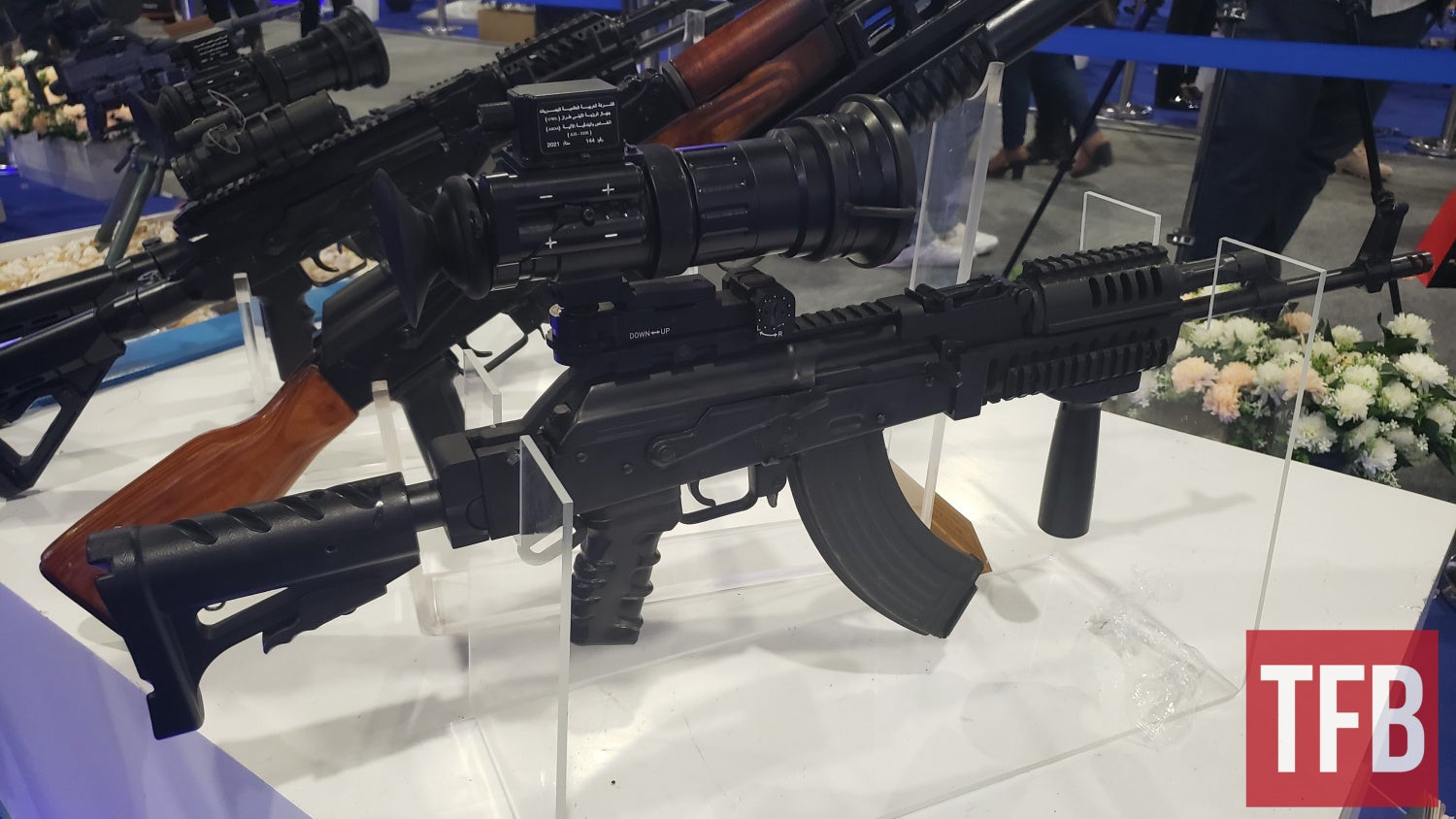
Upgraded Maadi AK rifle, second prototype
There is also a third modernization project. Unlike the previous two, this one is actually used by the Egyptian Special Forces. It was designed several years ago by SWAT police officer and firearms design engineer Zeyad Refaat.
This particular kit appears to be the most advanced out of the three, with M-LOK slots on the long aluminum handguard, a railed receiver cover with a special attachment system, and collapsible stock with an adjustable cheek riser.
It is also equipped with a special muzzle device that reduces recoil, muzzle flash, and concussion in tight spaces. Unfortunately, it was redacted from the photo cause it is a pending patent.

TFB exclusive. Redacted photo of modernization kit currently used by Egyptian special forces.
Perhaps, with this modernization package, Egyptian AKs will have better opportunities in the international market, when even Chinese manufacturers offer modernized AKs.
Hopefully, Egypt’s defense industry will overcome the current challenges and continue production of AK rifles in the near future. I am confident the US market would welcome a good Egyptian-made AKM with open arms and open wallets.
 Your Privacy Choices
Your Privacy Choices
